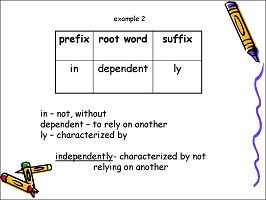Difference Between Morpheme and Allomorph
Morpheme
A morpheme is a minimal unit of meaning in a language. It can be defined as the smallest, meaningful, morphological unit in a language that cannot be further divided or analyzed. In linguistics, morphemes are classified into two categories. They are free morpheme and bound morpheme. A free morpheme is a word, that is, a free morpheme is a meaningful unit. In this article we will define the difference between Morpheme and Allomorph.
hat, believe, cheap, talk, red, new, cow, deliver, legal, etc.
Note that all free morphemes are words, but not all words are morphemes.
Bound morphemes
are the units that cannot stand alone. On their own, they have no meaning. It always has to be added to other morphemes to give a meaning. The underlined parts in the following words are bound morphemes.
Hats
Disbelieve
Cheaply
Talked
Reddish
Bound Morphemes can be further divided into two categories called derivational and inflectional morphemes. Derivational morpheme is a morpheme that is added to the (the base form) of the word to derive a new word.
Example 1:
Danger ⇒ Dangerous
Beauty ⇒ Beautiful
Example 2:
Visible ⇒ invisible
Believe ⇒ Disbelieve
Derivational morphemes
often change the word class of a word. (as in example 1)
Even if the word class remains unchanged, the meaning of the word will undergo a significant difference. (as in example 2)
Inflectional morphemes
do not cause a change in the meaning or word class, they merely serve as grammatical markers. They indicate some grammatical information about a word.
Danced –Past Tense
Vans – Plural
Raining – Progressive
Allomorph
Allomorph is a variant form of a morpheme. It can be simply described as a unit of meaning that varies in sound without changing its meaning. Allomorph is an alternative pronunciation of a morpheme in a particular context. Difference Between Morpheme and Allomorph
For instance, the plural morpheme in English, generally written as {s} has 3 allomorphs.
/s/ as in cats
/z/ as in dogs
/ɪz/ as in boxes
The past form morphemes also have three allomorphs.
/d/ as in slammed
/t/as in slipped
/ɪd/ as in stilted
Difference Between Morpheme and Allomorph
1-Definition
Morpheme is the minimal unit of meaning in a language.
Allomorph is a unit of meaning that varies in sound without changing its meaning.
2-Nature
Morphemes can be a word or part of a word.
Allomorphs are often a part of a word.
3-Area
Morphemes are concerned with the structure and meaning of words.
Allomorphs are concerned with the sound of words. Difference Between Morpheme and Allomorph
4- Main Difference
Morphology is the study of words and their structure. Morpheme is the smallest meaningful morphological unit in a language. Allomorph is a variant form of a morpheme. The main difference between morpheme and allomorph is that morpheme is concerned with the meaning and structure of a word whereas allomorph is concerned with the sound.
We hope that you have understood the difference between Morpheme and Allomorph.

